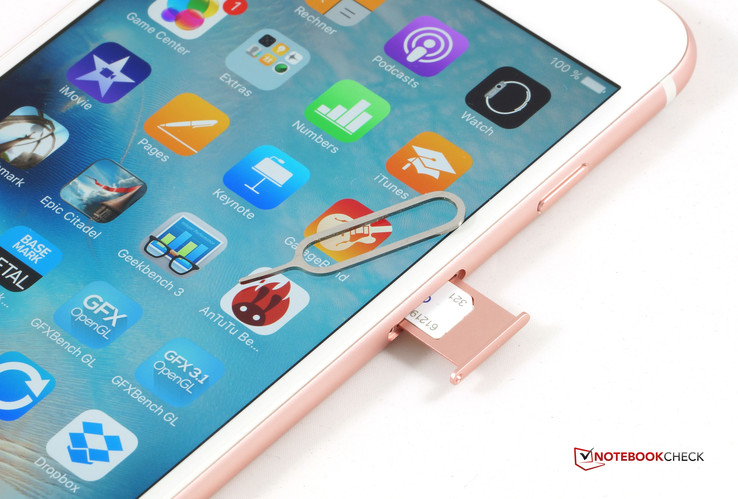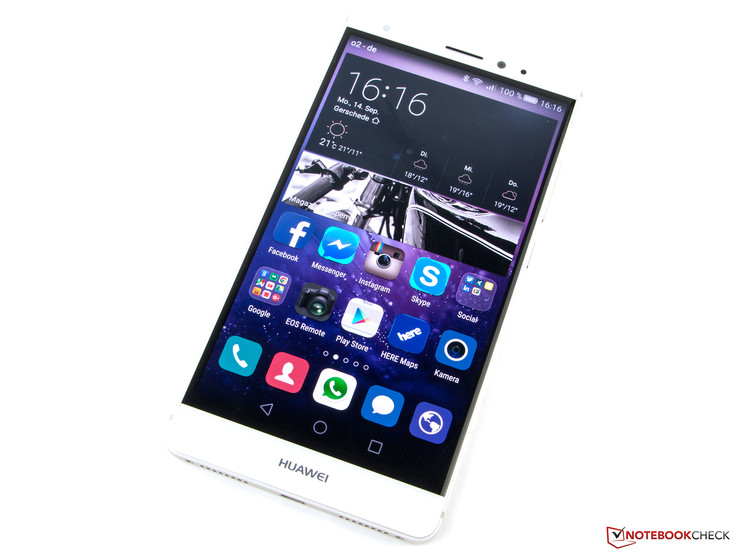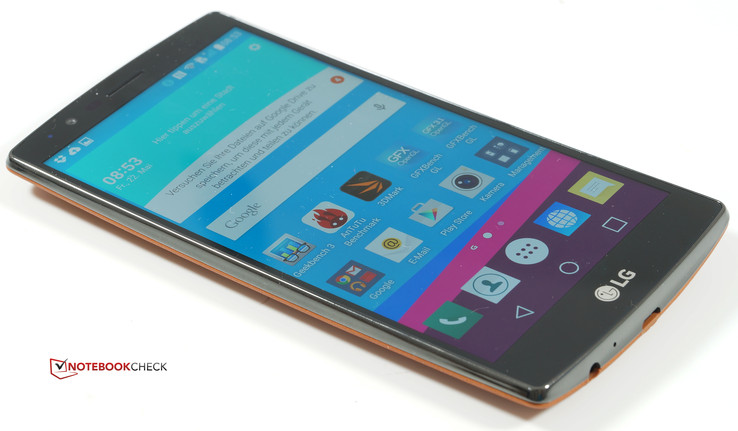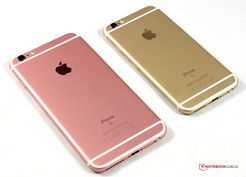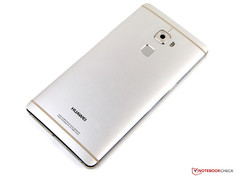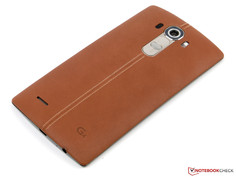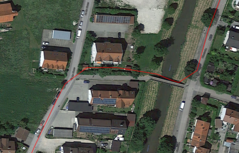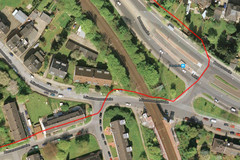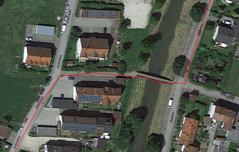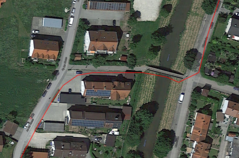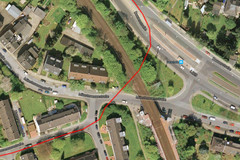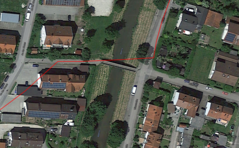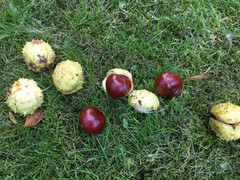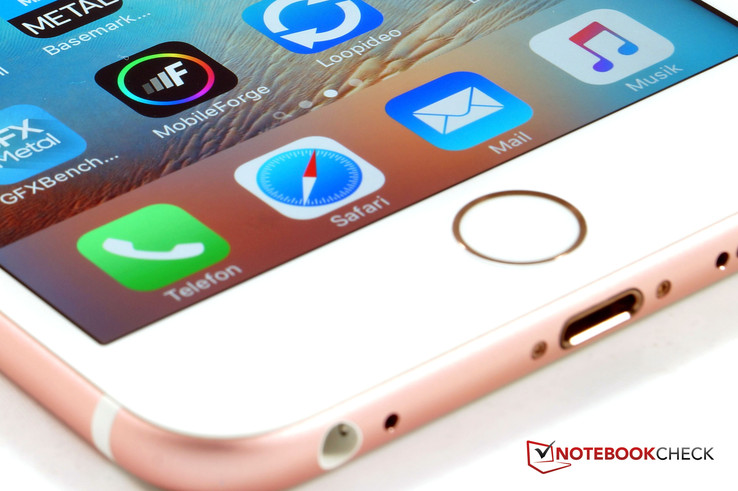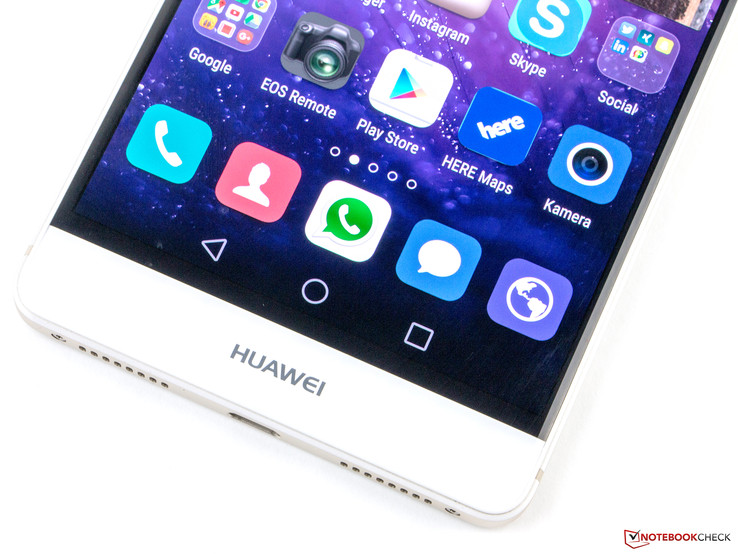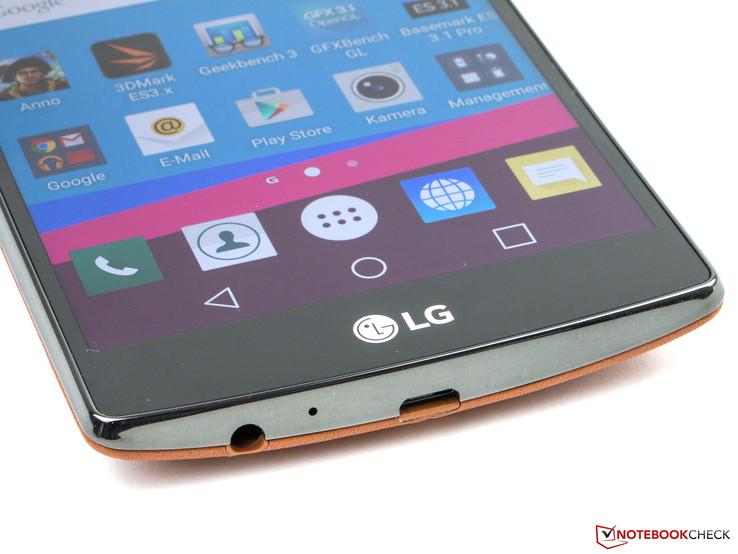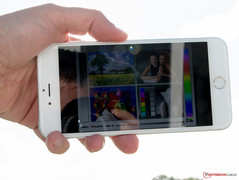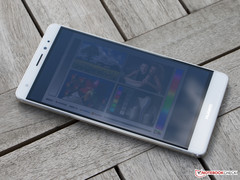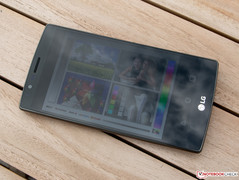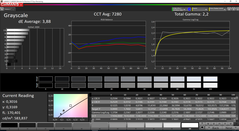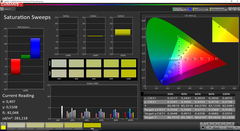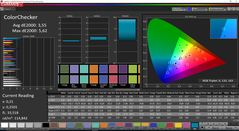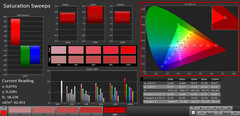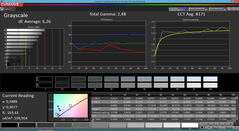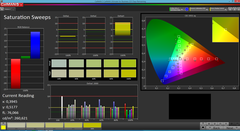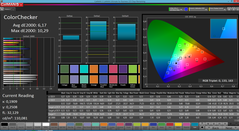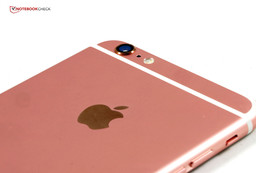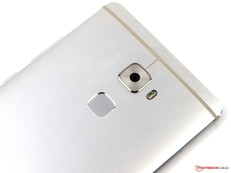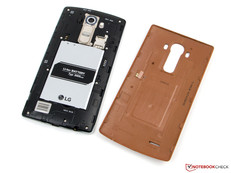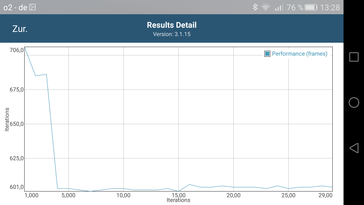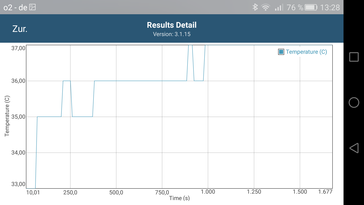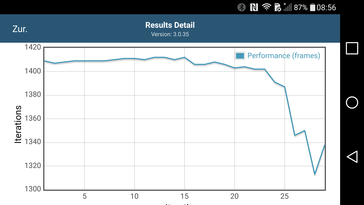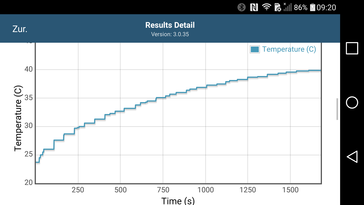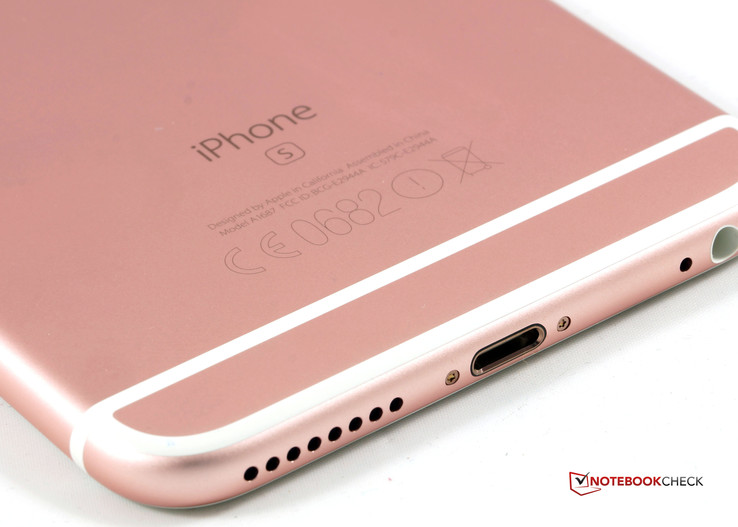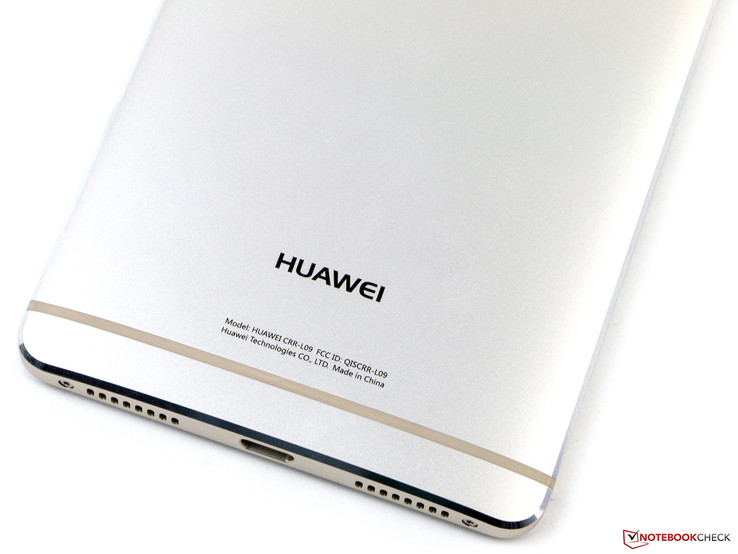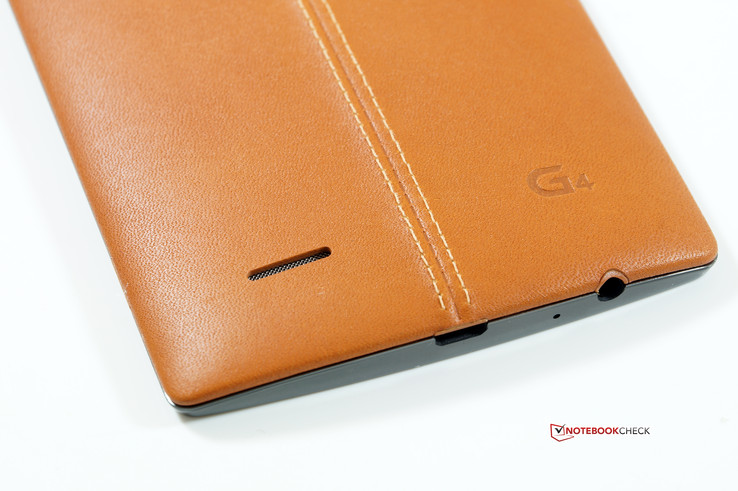Face Off: Apple iPhone 6S Plus vs. Huawei Mate S vs. LG G4
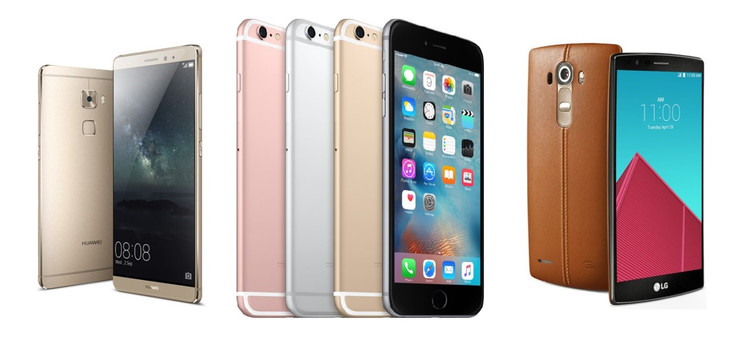
The Holidays are almost here, which means manufacturers will soon be releasing the best they can offer in order to take better advantage of those inevitably higher sales around the world. While Google and Microsoft have only just announced the Nexus 5X and Nexus 6P or Lumia 950 and 950 XL, Apple has already shown its hand with the iPhone 6 refresh.
Is the iPhone 6S Plus really the best 5.5-inch smartphone currently available? We compare it to the existing LG G4 and recently released Huawei Mate S to find out. Sorry, Samsung, but the 5.7-inch Galaxy Note 5 will have to wait for its own Face Off in the very near future.
We encourage users to check out our dedicated review pages below for more data and detailed analyses of each of the three models. This comparison is by no means a replacement, but a condensed aid for those on the fence.
Case
It's not often that a new Apple device is thicker than the model proceeding it. This is the case for the iPhone 6S Plus, which is now 0.2 mm thicker than the original 6 Plus. The difference is hardly noticeable in practice, but this also means that the Mate 6 is actually thinner by 0.1 mm at its thinnest edge for those who like to keep track. As for case quality, the new Aluminum alloy for the iPhone is robust without any PR bending issues that plagued the original. Its smooth finish is certainly more slippery than the G4.
We described the case of the Mate S as "immaculate" because of its aluminum frame, Gorilla Glass 4 cover, and splash-protection nano-coating. Its official thickness of 7.1 mm is a bit deceiving, however, as this applies only to its outer edge. The phone is actually 7.7 mm towards its center, though the extra thickness only adds to its durability.
The slightly curved G4 strays away from the all-Aluminum trend for a leather back with Gorilla Glass 3 on the front. The back is easily removable, which is becoming a rarity for the newest flagship smartphones. This does come at the cost of thickness, though thankfully not in rigidity or quality as we find the LG to be of excellent workmanship. A small gripe is its use of plastic around the USB and audio ports, which takes away from the high-end look of the device.
In terms of weight, the iPhone 6S Plus is heavier by far at 192 g compared to 156 g and 155 g of the Mate S and G4, respectively. The weight difference can be attributed to the larger size of the iPhone and the additional hardware necessary for 3D Touch. It's certainly noticeable when holding the device, but not so much as to be uncomfortable for extended use.
There are no losers in this category as each smartphone is exceptionally well-made. From a pure quality standpoint, the Apple smartphone slightly edges out the Huawei as it feels denser and more substantial. Nonetheless, we commend Huawei for offering something that is on almost equal footing for hundreds less.
Winner: Apple iPhone 6S Plus
Connectivity
The only major differences in terms of physical ports are the Lightning port and lack of MicroSD support on the Apple. In our opinion, we would rather keep the MicroSD slot and switch back to Micro-USB 2.0 than to have the Lightning port with no MicroSD at all, but many users may prefer otherwise. Nonetheless, it's a shame that the Mate S and G4 were released before USB Type-C made its way onto smartphones such as on the OnePlus 2.
From a wireless point-of-view, it's puzzling that Huawei chose not to equip the Mate S with 802.11ac compatibility, especially considering its flagship status. Additionally, the smartphone does not support SlimPort unlike on the G4 and instead uses Huawei's own Screen Share app solution. The IR blaster in the G4 makes it a better multimedia device than the Mate S.
The versatile Lightning port on the iPhone can accomplish many of the same tasks as above through costlier adapters and accessories. Excluding such add-ons, the G4 carries a bit more useful features out-of-the-box.
Winner: LG G4
| Apple iPhone 6S Plus | Huawei Mate S | LG G4 | |
| USB | 1x Lightning | 1x Micro-USB 2.0 | 1x Micro-USB 2.0 |
| Cameras Rear + Front | 12 MP iSight f/2.2 + 5 MP f/2.2 | 13 MP f/2.0 + 8 MP f/2.4 | 16 MP f/1.8 + 8 MP |
| Connections and Features | 3.5 mm audio, 802.11 a/b/g/n/ac, Bluetooth 4.2, NFC, iBeacon, GPS, Glonass | 3.5 mm audio, 802.11 b/g/n, Bluetooth 4.1, NFC, FM radio, OTG, Huawei Screen Share, GPS, Glonass, BeiDou | 3.5 mm audio, 802.11 a/b/g/n/ac, Bluetooth 4.1, NFC, FM radio, SlimPort, IR blaster, OTG, Miracast, GPS, Glonass, BeiDou |
| SIM slots | 1x nano-SIM | 1x nano-SIM | 1x micro-SIM |
| Storage | 16 GB/64 GB/128 GB | 32 GB + MicroSD | 32 GB + MicroSD |
GPS & Voice Quality
The Apple smartphone is equipped with the more accurate and faster GPS radio. TTFF takes only seconds and the signal is strong enough to work indoors when positioned near a window. When compared to a dedicated Garmin Edge 500, the iPhone is actually slightly more accurate, which is an uncommon outcome for our tracking tests.
The Mate S is consistently less accurate than the Garmin Edge 500 with sharper turns and shortcuts during our routes. The same holds true for the G4, though both phones are inaccurate by only 3 to 5 percent compared to our control device. All three phones are reliable for on-the-road use, but it's the iPhone that works best for geocaching and off-road trails.
On the other hand, call quality is just average on the iPhone. Background noise is more audible than we would like and the listener on the other end suffered from the same issues. Noise suppression could use improvement on future models. The G4 is even worse as we experienced static and interruptions that should be very familiar to those who have tried making calls with poor reception.
The Mate S provides the best calling experience as voices are loud and clear with better ambient noise filtering than the iPhone and G4.
Winner: GPS -- Apple iPhone 6S Plus
Call Quality -- Huawei Mate S
Cameras
The 12 MP rear camera on the new iPhone takes very sharp pictures whether up close or far away. However, this appears to be at the cost of brightness and a cooler color temperature compared to the competition. Darker shots are brightened to give a better overall picture, but a quick zoom-in shows softer edges around objects as a result.
The Huawei camera tends to take blurrier images in brightly lit conditions and sharper images in poorly lit conditions. Pictures are darker overall and any adjustments to brighten them will reduce picture quality. It's also worth noting that video recording is supported up to 1080p only compared to UHD (3840 x 2160) on both the iPhone 6S Plus and G4.
Camera quality is best on the G4. Its wider f/1.8 aperture does cause some focusing issues towards the outer edges and a stronger depth of field for macro shots, but colors are more natural even under low-light conditions. Color balance in particular is very good and is one of the best we've seen on a smartphone. We definitely recommend checking out the original reviews for more pictures and comparisons against a Canon EOS 70D standard.
Winner: LG G4
Input Devices & Controls
The iPhone is the only option with a physical Home key, fingerprint reader, and 3D Touch. The dedicated Home key in particular increases the overall length of the device, but frees up more onscreen pixels for apps in return.
As for the 3D Touch functionality, it's true that Huawei launched first with the technology ahead of Apple. Unfortunately, the feature appears rushed on the Mate S as if the manufacturer simply wanted to checkmark a box on a long list of items. The hardware works well enough, but there is no software to make the most of it.
3D Touch on the iPhone is much more mature in comparison and actually benefits the user by its deeper integration into the operating system. Called "Peep and Pop", we find it easier and quicker to switch between apps and perform other actions. Additionally, Apple has improved its fingerprint scanner to work faster and more reliably compared to its immediate predecessor.
The G4 comes in last as it lacks all of these features. Its core responsiveness and usability, however, are excellent nonetheless.
Winner: Apple iPhone 6S Plus
| Apple iPhone 6S Plus | Huawei Mate S | LG G4 | |
| Physical Home keys | Yes | No | No |
| 3D Touch | Yes | Yes | No |
| Fingerprint reader | Yes | Yes | No |
Display
Before going into details, we can comfortably say that all three smartphones offer astounding displays that are representative of their high prices. Thus, we're here to cherry pick the best one where even the loser can still be considered to have one of the best displays in the market.
First, the 6S Plus and G4 share almost identical maximum brightness and black levels for a very high contrast of about 1200:1 each. Apple has the advantage in more accurate colors with lower DeltaE values while the LG is sharper due to the higher QHD resolution. This is despite the fact that sRGB coverage is slightly lower on the Apple at 93 percent compared to 98 percent on the LG.
The Mate S is the odd one out of the group with its Super AMOLED panel instead of the traditional IPS. Contrast is essentially infinite for an unmatched experience when watching movies. This comes at the cost of more inaccurate colors and even a slight purplish tint when displaying grayscale images. Maximum brightness is also far lower at roughly 350 nits compared to almost 600 nits on the Apple and LG. Users looking for a brighter and more accurate AMOLED panel may want to consider the Galaxy Note 5.
| Apple iPhone 6S Plus | Huawei Mate S | LG G4 | |
| Size | 5.5-inch IPS | 5.5-inch Super AMOLED | Curved 5.5-inch Quantum IPS |
| Native Resolution | 1920 x 1080 | 1920 x 1080 | 2560 x 1440 |
| Pixel Density | 401 PPI | 401 PPI | 534 PPI |
| Glass | Ion-X glass | Gorilla Glass 4 | Gorilla Glass 3 |
While we like all three displays, the Mate S sacrifices a bit too much for our liking in order to get that perfect contrast. The G4 is capable of slightly deeper colors than the 6S Plus, but this means little when colors are already less accurate than the Apple out-of-the-box. Whether or not the curved 1440p screen is worth the small dip in color accuracy will be a subjective matter.
Winner: Tie -- Apple iPhone 6S Plus
LG G4
| Apple iPhone 6S Plus | Huawei Mate S | LG G4 | |
|---|---|---|---|
| Screen | |||
| Brightness middle (cd/m²) | 583 | 352 | 566 |
| Brightness (cd/m²) | 560 | 350 | 536 |
| Brightness Distribution (%) | 91 | 87 | 90 |
| Black Level * (cd/m²) | 0.46 | 0.47 | |
| Contrast (:1) | 1267 | 1204 | |
| Colorchecker dE 2000 * | 3.55 | 4.95 | 6.17 |
| Greyscale dE 2000 * | 3.88 | 6.54 | 6.26 |
| Gamma | 2.2 100% | 2.27 97% | 2.48 89% |
| CCT | 7280 89% | 6943 94% | 8171 80% |
| Color Space (Percent of AdobeRGB 1998) (%) | 59.05 | 65.48 | |
| Color Space (Percent of sRGB) (%) | 92.8 | 98.63 |
* ... smaller is better
Performance
CPU Performance
Apple continues to prove that you don't need an outrageous number of processor cores or inflated system RAM to be powerful. The Cupertino company seems quite comfortable with its dual-core chipset and 2 GB of RAM in the face of octa-core competitors with 4 GB of memory.
Raw benchmarks are in Apple's favor by more than just a few percentage points. Linpack results are over 2x and 4x the G4 and Mate S, respectively, while JavaScript performance, Kraken, and BaseMark are also faster on the iPhone. Other benchmarks like AnTuTu and Geekbench show scores that are much closer together, which may be due to better software optimization for multi-core SoCs. Regardless, very few real-world apps are designed to fully exploit hexa-core and octa-core chipsets like the Snapdragon 808 or Kirn 935.
See our dedicated SoC pages on the Apple A9 and Snapdragon 808 SoC for more benchmarks and comparisons. We do not yet have pages for HiSilicon Kirin processors.
| Apple iPhone 6S Plus | Huawei Mate S | LG G4 | |
| Chipset | Dual-core 1.8 GHz Apple A9 + M9 Motion | Octa-core 2.2 GHz HiSilicon Kirin 935 | Hexa-core 1.8 GHz Snapdragon 818 MSM8992 |
| CPU | Cyclone 3 | 4x 2.2 GHz Cortex-A53 + 4x 1.5 GHz Cortex A-53 | 4x 2.0 GHz Cortex-A57 + 2x 1.5 GHz Cortex-A53 |
| Fabrication | 14/16 nm | 28 nm | 20 nm |
| RAM | 2 GB | 3 GB | 3 GB |
| GPU | PowerVR GT7600 | ARM Mali-T628 MP4 | Qualcomm Adreno 418 |
| Linpack Android / IOS | |
| Multi Thread (sort by value) | |
| Apple iPhone 6S Plus | |
| Huawei Mate S | |
| LG G4 | |
| Single Thread (sort by value) | |
| Apple iPhone 6S Plus | |
| Huawei Mate S | |
| LG G4 | |
| PCMark for Android | |
| Work 2.0 battery life (sort by value) | |
| Huawei Mate S | |
| Work 2.0 performance score (sort by value) | |
| Huawei Mate S | |
| Work performance score (sort by value) | |
| Huawei Mate S | |
| LG G4 | |
| Sunspider - 1.0 Total Score (sort by value) | |
| Apple iPhone 6S Plus | |
| Huawei Mate S | |
| LG G4 | |
| Octane V2 - Total Score (sort by value) | |
| Apple iPhone 6S Plus | |
| Huawei Mate S | |
| LG G4 | |
| Mozilla Kraken 1.1 - Total (sort by value) | |
| Apple iPhone 6S Plus | |
| Huawei Mate S | |
| LG G4 | |
| WebXPRT 2015 - Overall (sort by value) | |
| Apple iPhone 6S Plus | |
| Huawei Mate S | |
| LG G4 | |
| Basemark ES 3.1 / Metal - offscreen Overall Score (sort by value) | |
| Apple iPhone 6S Plus | |
| Geekbench 3 | |
| 32 Bit Multi-Core Score (sort by value) | |
| LG G4 | |
| 32 Bit Single-Core Score (sort by value) | |
| LG G4 | |
| 64 Bit Multi-Core Score (sort by value) | |
| Apple iPhone 6S Plus | |
| Huawei Mate S | |
| LG G4 | |
| 64 Bit Single-Core Score (sort by value) | |
| Apple iPhone 6S Plus | |
| Huawei Mate S | |
| LG G4 | |
| PassMark PerformanceTest Mobile V1 | |
| 3D Graphics Tests (sort by value) | |
| Apple iPhone 6S Plus | |
| LG G4 | |
| 2D Graphics Tests (sort by value) | |
| Apple iPhone 6S Plus | |
| LG G4 | |
| Memory Tests (sort by value) | |
| Apple iPhone 6S Plus | |
| LG G4 | |
| Disk Tests (sort by value) | |
| Apple iPhone 6S Plus | |
| LG G4 | |
| CPU Tests (sort by value) | |
| Apple iPhone 6S Plus | |
| LG G4 | |
| System (sort by value) | |
| Apple iPhone 6S Plus | |
| LG G4 | |
| AnTuTu v5 - Total Score (sort by value) | |
| Apple iPhone 6S Plus | |
| Huawei Mate S | |
| LG G4 | |
* ... smaller is better
GPU Performance
The integrated PowerVR GPU in the iPhone 6S and 6S Plus is one the fastest available for a smartphone. Its closest rival thus far is the Tegra X1, which can only be found in the Shield TV as of this writing. Thus, it should be of no surprise that GPU performance FROM THE IpHONE is over 4x that of the Mate S and almost 2x that of the G4 according to 3DMark Ice Storm. The performance gaps are just as large when running GFXBench as well. This isn't to say that the Mate S is unable to run 3D titles from the Android market, but we were able to notice slight stuttering during more intensive moments in 3D titles such as Asphalt 8.
See our dedicated GPU pages for PowerVR GT7600, Mali-T628 MP4, and Adreno 418 for more comparisons and benchmarks.
| 3DMark | |
| 1280x720 offscreen Ice Storm Unlimited Physics (sort by value) | |
| Apple iPhone 6S Plus | |
| Huawei Mate S | |
| LG G4 | |
| 1280x720 offscreen Ice Storm Unlimited Graphics Score (sort by value) | |
| Apple iPhone 6S Plus | |
| Huawei Mate S | |
| LG G4 | |
| 1280x720 offscreen Ice Storm Unlimited Score (sort by value) | |
| Apple iPhone 6S Plus | |
| Huawei Mate S | |
| LG G4 | |
| GFXBench 3.0 | |
| 1920x1080 1080p Manhattan Offscreen (sort by value) | |
| Apple iPhone 6S Plus | |
| Huawei Mate S | |
| LG G4 | |
| on screen Manhattan Onscreen OGL (sort by value) | |
| Apple iPhone 6S Plus | |
| Huawei Mate S | |
| LG G4 | |
Stress Test
We use GFXBench Battery Test to observe for any throttling issues over a 25-minute stress test period. The Mate S begins throttling just a few minutes into the test while the G4 shows a slight drop in performance towards the end of the test. In either case, the performance drops are about 10 to 15 percent, which is not significant enough to pose issues when playing games for long periods.
GFXBench is also available for iOS, though without the graphing features as found on its Android counterpart. When stress testing was complete for the iPhone 6S Plus, we immediately ran 3DMark 2013 afterwards to observe for any drops in final scores. Numbers were stable, so any significant throttling is very unlikely on the Apple compared to the G4 or Mate S.
Winner: Apple iPhone 6S Plus
Emissions
Temperature
Surface temperatures are lowest on the Huawei by far. This is likely due to its lower-power HiSilicon SoC, which is much slower in raw performance than the Apple A9 and Snapdragon 808. Temperatures remain well below 40 C even when under stress with no major hot spots.
Winner: Huawei Mate S
| Apple iPhone 6S Plus | Huawei Mate S | LG G4 | |
| Average surface temperature when idling | 31.0 C | 29.7 C | 31.0 C |
| Average surface temperature under high loads | 37.8 C | 33.0 C | 39.8 C |
| Ambient temperature | 21.9 C | 22.2 C | 22.1 C |
Battery Life
Our runtime results are interesting in that the smartphone with the longest battery life will depend on the onscreen activity. If simply sitting idle on the home screen at minimum brightness, then the Mate S will power down much sooner than both the iPhone and G4. On the flip side, the same smartphone can last the longest when web browsing at a brightness of 150 nits. Our WiFi testing conditions are much more representative of real world use, so the Mate S wins this round based on this outcome alone. If the phone is simply idling on your desk or pocket for days, then the iPhone and LG will outlast the Huawei.
It's worth mentioning that the G4 is the only smartphone out of the three with a removable battery, which may be reason enough for users to prefer the LG phone despite its lower WiFi runtimes.
Our numbers below are represented in minutes until automatic shutdown.
Winner: Huawei Mate S
| Apple iPhone 6S Plus 2750 mAh | Huawei Mate S 2700 mAh | LG G4 3000 mAh | |
|---|---|---|---|
| Battery runtime | |||
| Reader / Idle (h) | 27.6 | 18.7 | 27.6 |
| WiFi v1.3 (h) | 8.6 | 9.6 | 5.4 |
| Load (h) | 3.3 | 4.7 | 1.9 |
Verdict
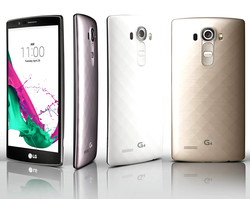
A definitive winner is, once again, impossible to choose due to features that buyers may prefer over others. There are users who swear by the MicroSD slot and removable battery and will stay away from devices like the iPhone 6S Plus or Galaxy S6 Edge Plus even when they are excellent smartphones. The G4 is one of the few flagships left with both features intact. Its QHD panel, curved form factor, and higher quality camera further separate it from the more inexpensive OnePlus 2 as well.
If removable storage and battery are not deal breakers, however, then the iPhone 6S Plus is preferable over the Mate S. The biggest advantage of the Mate S over the Apple is its superior contrast, but this comes at too great of a cost including a dimmer backlight and less accurate colors. Furthermore, its 3D Touch feels like a last-minute addition and its raw hardware performance is inferior to both the G4 and iPhone 6S Plus. Its better call quality isn't enough for us to recommend the Huawei over the Apple.
Apple iPhone 6S Plus
Price comparison
LG G4
Price comparison
Huawei Mate S
Price comparison
| Apple iPhone 6S Plus | Huawei Mate S | LG G4 |
|---|---|---|
+ Faster CPU and GPU performance by far + Better 3D Touch integration + Fingerprint reader + More accurate GPS + Thunderbolt + More accurate display + No major CPU or GPU throttling | + Fingerprint reader and 3D Touch + Super AMOLED panel; Virtually perfect contrast + Better call quality + MicroSD + Longer WLAN runtimes + Splash-resistant nano-coating + Lower surface temperatures | + Higher QHD resolution and curved display + Slightly wider color gamut + Removable battery and back cover + Higher quality camera + MicroSD, IR blaster, SlimPort |
- Poorer call quality - Heavier - Longer in length - No MicroSD - Warmer surface temperatures - Non-removable battery | - Dimmer display - Faster throttling - Weaker CPU and GPU performance - 3D Touch feels tacked on - Less accurate colors - Non-removable battery | - No fingerprint reader or 3D Touch - Poorer call quality - Warmer surface temperatures - Shorter battery life - Thicker profile - Less accurate colors |
See more quick comparisons in our Face Off series:
- Dell XPS 15 vs. Apple MacBook Pro 15 vs. Asus ZenBook Pro UX501
- Aorus X3 Plus vs. Gigabyte P34W vs. Razer Blade 14
- Dell XPS 13 vs. Apple MacBook Pro 13 vs. Asus ZenBook UX305
- HP EliteBook 820 G2 vs. Lenovo ThinkPad X250 vs. Dell Latitude 12 E7250
- Asus ROG G751 vs. Dell Alienware 17 vs. MSI GT72 Dominator
- Lenovo ThinkPad T450 vs. Acer TravelMate P645 vs. Dell Latitude 14 E5450
- Dell Alienware 15 vs. Clevo P751ZM vs. MSI GE62
- Acer Aspire V17 Nitro vs. Asus N751 vs. HP Envy 17
- Samsung Galaxy Tab S 8.4 vs. Sony Xperia Z3 Compact vs. Dell Venue 8 7000
- Asus EeeBook X205TA vs. Lenovo S20 vs. Acer Aspire ES1
- Microsoft Surface Pro 3 vs. Asus Transformer Book T300 Chi vs. Toshiba Portege Z20t
- Lenovo ThinkPad Edge E550 vs. Acer Aspire E5 vs. HP ProBook 450 G2
- HP Pavilion 15 vs. Lenovo IdeaPad Z50 vs. Toshiba Satellite S50
- Apple MacBook Air 13 2015 vs. Samsung ATIV Book 9 900X3G vs. Asus ZenBook UX303
- Asus ROG G501 vs. Lenovo Y50 vs. Acer Aspire V15 Nitro
- OnePlus 2 vs. Honor 6 Plus vs. Motorola Moto X Play
- Lenovo Yoga 500 vs. Dell Inspiron 15 7000 vs. Toshiba Satellite Radius 15




